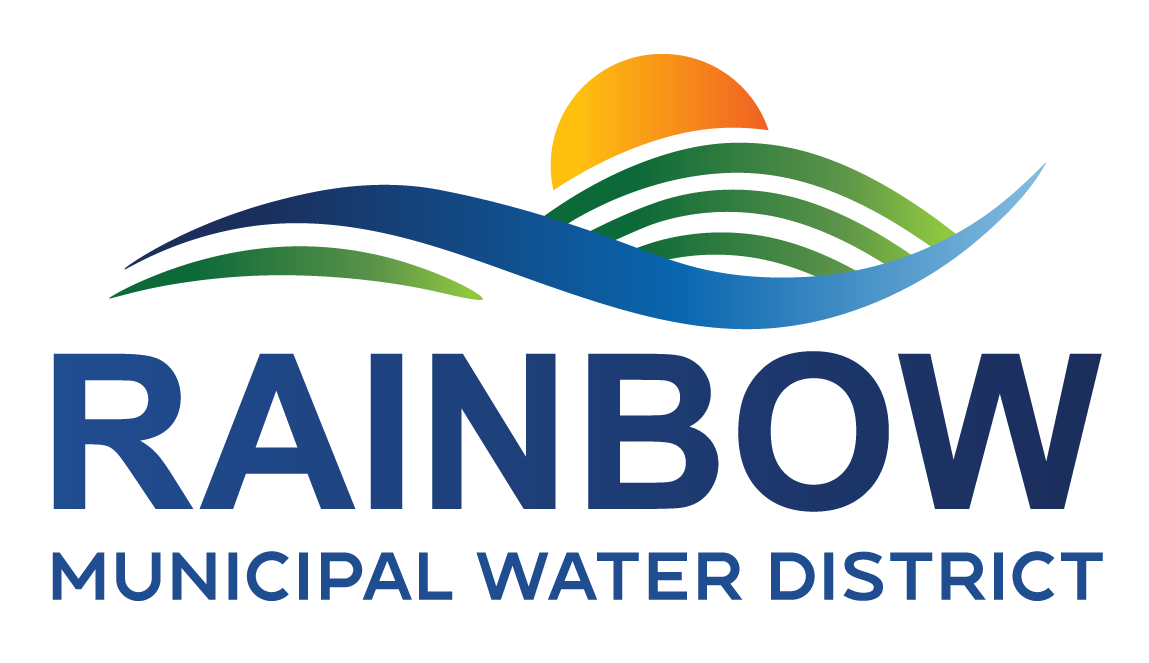What's in My Water?

Water Quality: What's in My Water?
Rainbow Water imports 100% of its water supply from more than 500 miles away to deliver water that meets or exceeds all state and federal water quality standards. Water is sourced from the Colorado River and Northern California through the State Water Project before it reaches the taps of over 9,000 customers. The State Water Project (SWP) begins 70 miles north of Sacramento at Lake Oroville (pictured above), the largest state reservoir and dam in the United States. Lake Oroville feeds into the Feather River and Sacramento River, to the SWP's central hub at the Sacramento-San Joaquin Delta to redistribute through a vast system of rivers, lakes and aqueducts to deliver water to communities in Southern California.
The transportation of water through natural waterways and aqueducts across the state results in significant evaporation, ultimately elevating water hardness. Water is deemed “hard” when it contains high levels of calcium and magnesium; however, it remains safe for customers to drink and use. Rainbow Water receives a blend of water sourced from the SWP and Colorado River through pipelines connecting to the Robert A. Skinner Treatment Plant in Temecula. The water, in particular when the blend contains considerable supply from the Colorado River, is hard and is estimated to have an average 228 parts per million of total hardness. Water softeners installed by the customer can reduce the mineral content, though this process does not offer any direct health advantages.
What about PFAS in the water?
Polyfluoroalkyl substances, or PFAS, are a group of over 4,700 synthetic chemicals created in the 1940s to repel water, oil, grease, and stains. These nearly indestructible compounds are found in various consumer products, including carpets, fire retardants, food wrappers, and makeup. According to the California State Water Resources Control Board - Division of Drinking Water (SWRCB-DDW), the primary source of PFAS exposure for most people is through food, either from food packaging, farming processes, or consuming fish and animals that have absorbed these chemicals over time. Recent testing from the Metropolitan Water District reported their imported water does not contain any of these PFAS compounds, nor have they been detected in the treated water provided to customers.
What about fluoride?
Fluoride is a naturally occurring mineral found in ground water, lakes, rivers and many foods. Since 2007, the Metropolitan Water District of Southern California has adjusted naturally occurring fluoride to the level of 0.7 milligrams per liter (or parts per million), as recommended by the California Department of Public Health to prevent tooth decay. Rainbow Water does not add fluoride to the water imported from Metropolitan. According to public health experts, community water fluoridation is the single most cost-effective, equitable, and safe public health measure to prevent tooth decay.
To obtain more information about fluoridation, please visit the SWRCB-DDW website.
Monitoring Your Water Suppy
The water contains a mixture of chlorine and ammonia, which creates a strong disinfectant known as chloramines. Chlorine residual is constantly monitored, and when applicable, Rainbow Water injects small amounts of chlorine into the water. Rainbow Water is prepared to take remedial action to emergencies as set forth in an Operational Plan approved by the Department of Health Services.
Rainbow Water routinely monitors for contaminants in your drinking water according to federal and state laws. Drinking water, including bottled water, may reasonably be expected to contain at least small amounts of some contaminants. The presence of contaminants does not necessarily indicate that the water poses a health risk. More information about contaminants and potential health effects can be obtained by calling the EPA's Safe Drinking Water Hotline at (800) 426-4791 or look for it on the EPA's website.
